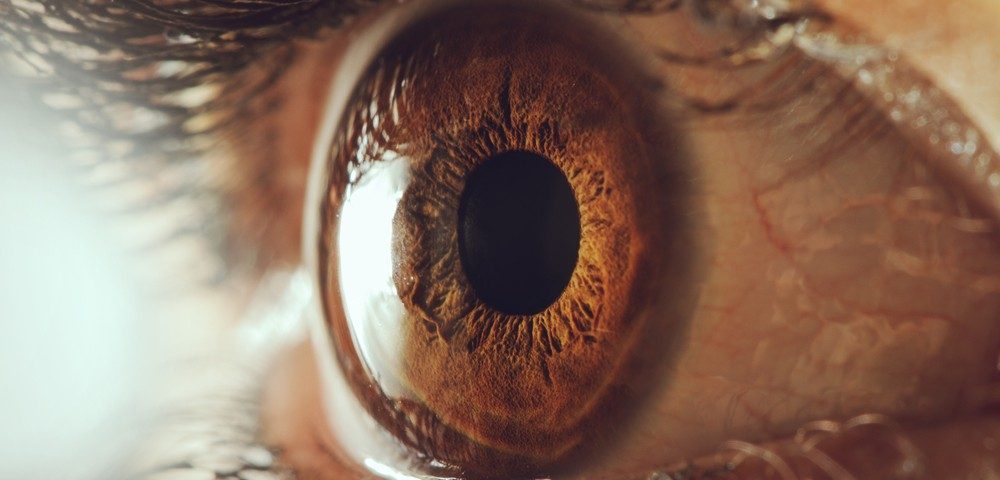Retina May Be a ‘Window’ to Watch Sanfilippo Progression

Looking at the tissue of the retina — the innermost, light-sensitive layer of the eye — may be a way to monitor Sanfilippo progression and treatment outcomes, a study has found.
In a mouse model of the disease retinal lesions emerged very early, even before the appearance of the first symptoms, and paralleled degenerative lesions found in the brain.
The study, “Is the eye a window to the brain in Sanfilippo syndrome?,” was published in the journal Acta Neuropathologica Communications.
“[R]etinal imaging may provide a strategy for monitoring therapeutic efficacy, given that some treatments currently being trialed in children with Sanfilippo syndrome are able to access both brain and retina,” Kim Hemsley, PhD, said in a press release. Hemsley is lead study investigator and an associate professor at Flinders University in Australia.
Sanfilippo syndrome is a neurodegenerative disorder in which symptoms manifest in early childhood. In the most common and severe Sanfilippo syndrome subtype, Sanfilippo type A, a mutation in the SGSH gene prevents the appropriate breakdown of heparan sulfate, leading to its accumulation within cellular structures called lysosomes.
The resulting toxic accumulation of heparan sulfate causes a cascade of inflammation and degeneration in the central nervous system (CNS, the brain and spinal cord).
There are no approved treatments for Sanfilippo syndrome, although several investigational therapy approaches are in clinical trials. Still, monitoring disease progression and the effectiveness of those potential therapies “remains a significant obstacle and there is an urgent unmet need for practical, non-invasive, and widely available techniques to be developed,” the researchers wrote.
The retina is the innermost layer of the eye that receives light and sends that information to the brain, which then transforms it into images. The retina exhibits significant degeneration in Sanfilippo and is a tissue that can be monitored non-invasively. Moreover, in many neurological disorders, retinal lesions parallel, or even precedes, those found in the brain, making it a useful biomarker for disease onset and progression.
Researchers now sought to characterize retinal and brain lesions in a mouse model for Sanfilippo subtype A, and understand if the retina could be used as a “window” to the brain in Sanfilippo. They also investigated the effectiveness of treating these animals with a gene therapy that could deliver a healthy version of the SGSH gene.
“Our objective is to ultimately provide a therapeutic monitoring strategy in addition to a prognostic tool, for children diagnosed with this devastating disorder,” the researchers wrote.
In Sanfilippo mice, retinal thickness declined progressively, primarily due to photoreceptor cell loss, which is characteristic of the syndrome. Photoreceptor cells are special cells in the retina that can convert light into signals that are sent to the brain, giving us our color vision and night vision.
Heparan sulfate accumulation, signs of lysosomal dysfunction, and active microglia — cells that modulate neural inflammatory responses — in both retinal and brain cells also were observed. These began at 3 weeks old, at a time when the first symptoms were not yet present (pre-symptomatically), and increased progressively through 25 weeks.
The rate of heparan sulfate accumulation, lysosomal expansion, and the presence and number of active microglia in the Sanfilippo mouse brain was comparable to that observed in the retina.
“This suggests that methods that visualise and quantitate any of these lesions in [Sanfilippo type A] retina could inform clinicians about brain disease progression,” the researchers wrote.
Having characterized disease progression in both the retina and brain, researchers then treated the affected mice with a gene therapy using an associated adeno virus (AAV) to deliver a healthy copy of the SGSH gene into cells. The therapy was administered intravenously (into the vein) at day zero and day five of life.
At six weeks post-treatment, the gene therapy normalized the size of lysosomes in the retina and in certain areas of the brain, and significantly reduced heparan sulfate levels in brain, suggesting that it was able to provide short-term relief of some Sanfilippo symptoms.
“This study offers new hope of using the progression of lesions in the retina—which is part of the central nervous system—as a ‘window to the brain …We were able to show that disease lesions appear in the retina very early in the disease course, in fact much earlier than previously thought,” said Helen Beard, first author of the study and senior research officer at Flinders.
The results highlight the potential of early and non-invasive monitoring of Sanfilippo syndrome through retinal imaging. The researchers also believe that the early age at which the retina displays disease lesions highlights “the absolute necessity of directing therapeutics at both the brain and the retina, to ensure patient quality of life is maximised.”






